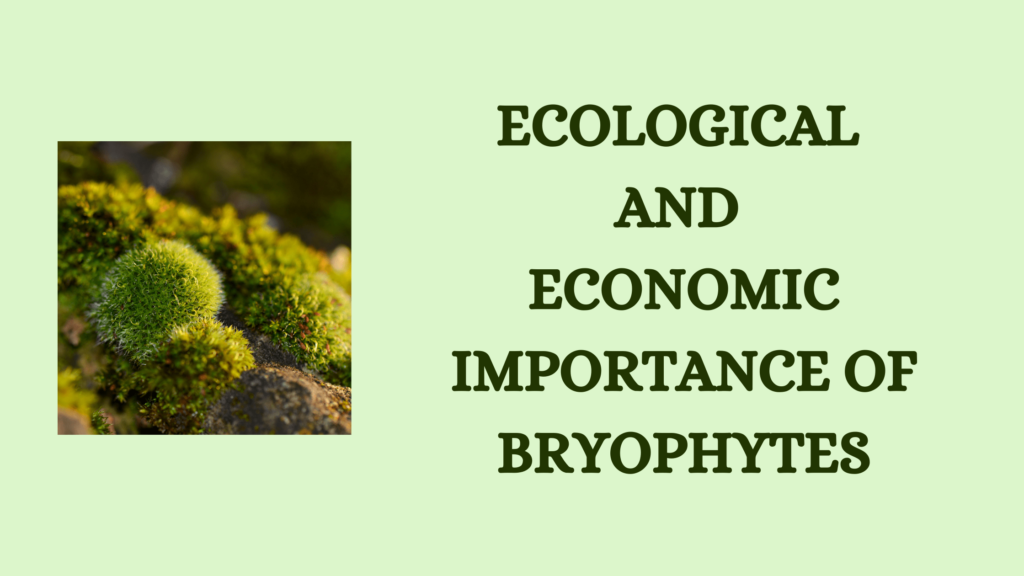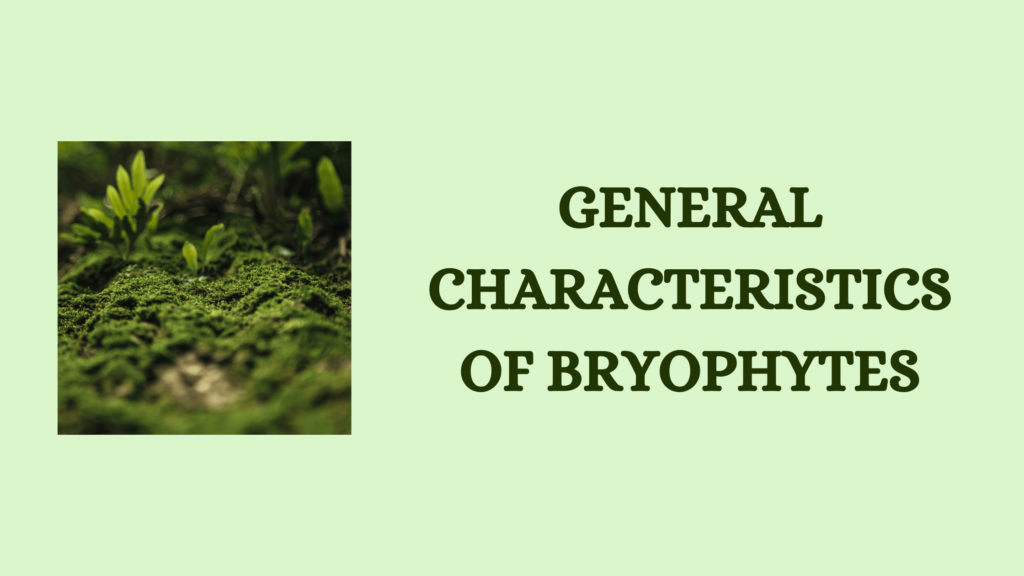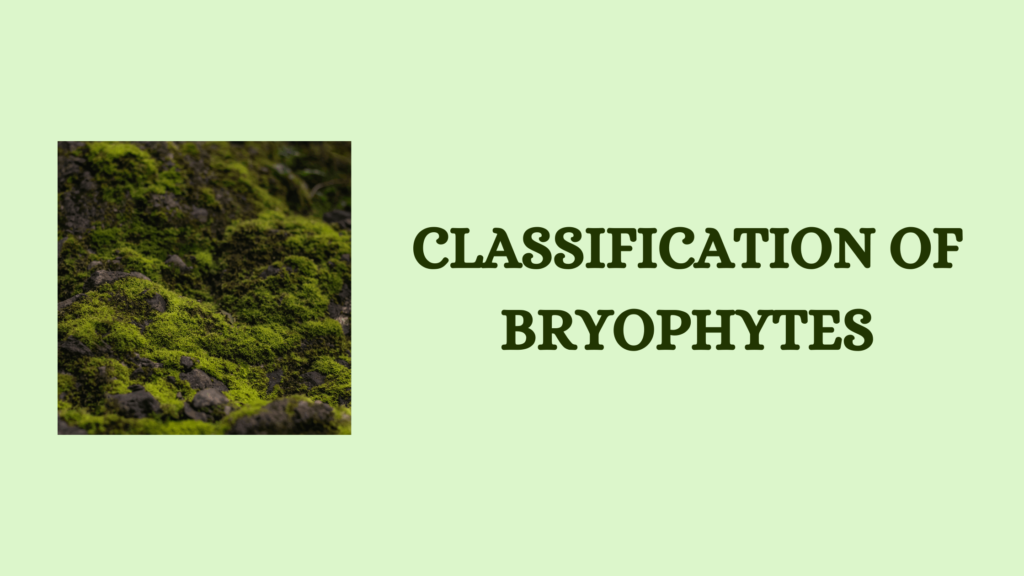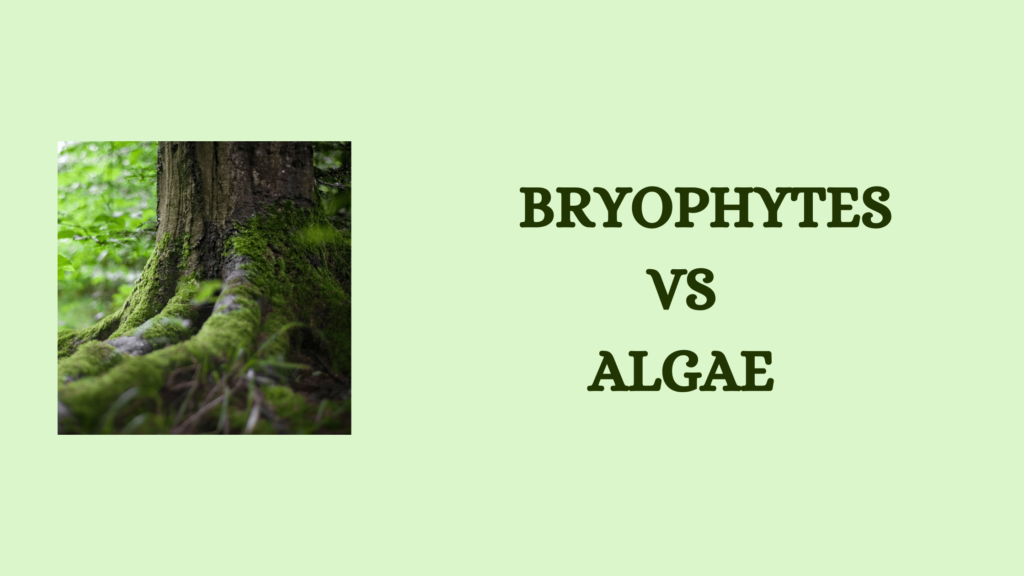Bryophytes are significant in the evolutionary process of plants. They are densely distributed across the globe. Their water-holding capacity makes a buffer system that helps other plants conduct water. Economically, bryophytes are important for soil conservation, pollution monitoring, the medical and research field, etc. Thus the ecological and economic importance of bryophytes makes them an integral part of an ecosystem.
Ecological and Economic Importance of Bryophytes
Role Of Bryophytes In Medicine
Several bryophytes possess antimicrobial properties and are widely used in the preparation of different kinds of medicine. They are effective against many bacterial and fungal diseases.
Wiegner discovered the antibacterial properties of Pallavacinia and Reboulia. Madsen observed that Sphagnum portoricense, S.strictum, and Dumortiera hirsuta did not need any maintenance in the herbarium since they had antibacterial effects due to the presence of certain compounds that inhibit bacterial growth. They also act against Candida albicans.
Walkington discovered 18 different species of mosses that have inhibitory effects on both gram-positive and gram-negative bacteria. Later, it was found that the presence of certain organic non-polar acids such as polyphenolic compounds was responsible for these antibacterial effects.
- Bryophytes like Marchantia polymorpha are mixed with different oils to prepare ointments for eczema, wounds, burns, cuts, and infections or diseases caused by fungi or bacteria.
- Extracts of Hypnum cupressiforme are used to treat fungal and bacterial diseases due to their antifungal and antibacterial properties respectively.
- Gupta and Singh found that the petroleum-ether extract of Timmiella and Barbula can inhibit the growth of both types of bacteria. A compound called lunularic acid is responsible for the inhibitory property.
- In 1982, Asakawa found out that Radula sps to be effective against Staphylococcus due to the presence of three phenyl bibenzyls.
- Matuso isolated an antifungal compound from the methanol extract of Herberatus aduncus which inhibits the growth of Pythium debaryanum and Rhizoctonia solani.
- Ichikawa isolated antimicrobial acetylenic and cyclophentenoyl fatty acids from over 80 mosses that are effective against Pyricularia oryzae which causes blight disease in paddy.
- Isoc discovered that Porella has antibiotic properties.
Medicinal uses of bryophytes
- Marchantia polymorpha is used to cure liver afflictions and pulmonary tuberculosis in humans.
- The extracts of Polytrichum commune, Marchantia stellata, and M. polymorpha are used for their anti-tumor properties.
- The hot decoction of dried Sphagnum is effective against eye diseases and hemorrhage.
- Polytrichum commune tea can dissolve stones in the gall bladder and kidneys.
- Sphagnol, a peat tar distillate is used for skin diseases.
Moreover, it was also found that compounds such as lunularic acid, alpha, and beta herbertenol in some liverworts made them resistant to certain types of fungal diseases. All of these prove the role of bryophytes in the field of medicine. They are used to extract these antibiotics that can be used in different plants, animals, and humans.
Importance Of Bryophytes In Pollution Monitoring
Mosses are one of the vegetation types most sensitive to pollution and pollutant deposition, acidity, and nitrogen. It has become extinct in urban areas as well as near industries.
Gordon and Gorham first studied the impact of certain pollutants on mosses. Their study showed that sulfur dioxide affected the growth of mosses. Arnold studied the same about mosses in Europe. Other scientists also observed that some epiphytic mosses disappear from polluted cities at a faster and higher rate.
Bryophytes as Bioindicators
It was Skye in 1965 who found that bryophytes could be used as bioindicators of air pollution. A comparison of changes in the structure of vegetation in moss communities from polluted and non-polluted areas reveals the extent of pollution.
The disturbed growth of bryophytes is used to determine the degree of pollution. Such mosses are transplanted in healthy forms to a polluted area. They are constantly monitored for their growth pattern. It is compared with mosses from other polluted areas to understand the type of pollution and its intensity.
Gilbert studied the effects of microhabitats on the distribution and appearance of mosses that are sensitive to sulfur dioxide. He noted that high concentrations of sulfur dioxide reduced the growth and distribution of mosses. At even higher concentrations, it reduced the reproductive efficiency and capsule formation.
Effect of Acid Rain
Raeymackers found that acidified rainwater at low pH affected not only the growth and reproduction of bryophytes but also the chlorophyll content in mosses. Further studies show that exposure to industrial gases and other pollutants leads to the disappearance of mosses.
Mosses like Sphagnum medium, Frontinales antipyretica, etc accumulate pollutants in them. By studying their concentration, the extent of pollution can be determined.
Some mosses accumulate heavy metals. By analyzing their body, the amount of these metals inside of them and in the atmosphere can be determined.
Bryophytes as Bioindicators of Water Pollution
- Amblystegium riparium grows in flowing or stagnant water having high nutrient concentrations.
- Frontinalis antipyretica is used to monitor the presence of heavy metals in water. Due to its high tolerance and absorption of heavy metals, this plant is used to purify water. It helps determine the level of cadmium in water.
- Scapania undulata is seen in pools and running water. They have a higher tolerance to metals and are used to determine the presence of heavy metals such as cadmium, lead, zinc, etc.
- Sphagnum or peat moss can be a filtering agent to absorb heavy metals and other water pollutants. They are widely used in wastewater treatment plants and effluents to separate wastes and heavy metals which can later be extracted.
- Leaves of Funaria suffer disintegration of chloroplasts when exposed to pollutants.
- Dicranum scoparium accumulates high amounts of heavy metals such as mercury. The amount of heavy metals in this is much higher than that in the Polytrichum commune.
Role Of Bryophytes In Soil Conservation
Heavy rain often washes the top fertile soil away. Bryophytes especially mosses, can prevent such soil erosion. Mosses grow thick and their gametophytes appear velvety over the topsoil in the forest. This green blanket prevents erosion and excessive evaporation of moisture from topsoil.
Bryophytes That Help with Soil Conservation
Studlar identified that mosses can be used as inhibitors of soil erosion due to their trample resistance and regenerative ability.
- Polytrichum pileferum and P. juniperinum are useful as sand binders to stabilize sand slopes in Michigan and British islands.
- In England, mosses such as Brachythecium, Torula, etc bind sand on coastal dunes. They retain moisture thus stabilizing the dunes preventing them from being washed away by wind. Another example is Cerafodon purpureu.
- Bryum algovicum or dropping thread moss grows in the depressions of lake dunes. Their growth collects layers of sand which stabilize the soil to create different textures of the dunes.
- In Texas, Pogonatum protects erosion of sandy and clayey banks of the sea. Mosses like Bryum apendulum, Barbara fallax, Ceratodon purpurea, etc., are other bryophytes used along the shores.
- Weissia, Barbula, and Bryum are used on the sides of newly constructed roads to prevent soil erosion from their sides.
- Conrad also suggested sowing spores and other vegetative parts of bryophytes along the places with a higher chance of soil erosion.
- Haplomitrium mnioides can absorb 12 times more water than its dry weight so they are used as water storage in the soil leading to soil conservation.
- The thick texture of bryophytes helps them retain more water. Thus they hold on to the rain water to reduce its impact on the soil. This retention of water will also reduce the amount of water that usually runs off.
Role Of Bryophytes As Source Of Food
Though smaller in size, bryophytes are widely used as food by animals and birds. They may taste bitter or bad to humans but hold high nutritional value to animals and birds.
Bryophytes are the desired food for both animals and birds, especially in the Tundra biome where other types of plants are scarce. Due to the high nutritional value of bryophytes, many of them depend on bryophytes for survival. The vibrant color of their capsules and fruity smell attract birds towards them. Besides being a feed for birds, the seeds of bryophytes get dispersed for their cervical.
Bryophytes as Animal Food
- Sphagnum was mixed with egg yolk and was served to tadpoles (Han-fo Ting, 1950).
- In 1973, Crum reported that reindeer in Alaska grazed on bryophytes like Polytrichum, Aulacomnium, Hylocomium, etc.
- Sugawa found that Barbella pendula contains vitamin B12 and is now used to feed puppies and chickens.
- Rodents feed on some forest mosses. When they are snow-covered, they consume the entire plant but when exposed, they eat only the top shoots. Moreover, rodents prefer mosses such as Sphagnum, Dicranium, Pleurozium, Hylocomium, etc.
- Mosses are found to have arachidonic acid. It has a low melting point which keeps the fatty food from freezing. Richardson found that several birds and animals in the northern parts of the world consume capsules of Bryum and Polytrichum.
- Sphagnum is a feed for baby pigs to prevent anemia.
Bryophytes as Bird Feed
- Birds eat the capsules of leafy gametophytes of bryophytes, especially in the Arctic region.
- Capsules of Polytrichum commune are a favorite feed of White-throated sparrows.
- Norwegian goose chicks feed on capsules of Bryum and Polytrichum.
- In Alaska and northern Europe, Willow Ptarmigan chicks eat Polytrichum and Pohlia during spring and consume Distichium inclinatum as a forage.
- In New Zealand, Kakoa birds feed highly on different mosses during spring and summer, when the capsules are abundantly available.
References
- Glime, J. M. 2017. Birds and Bryophytic Food Sources. Chapt. 16-2. In: Glime, J. M. Bryophyte Ecology. Volume 2. https://digitalcommons.mtu.edu/cgi/viewcontent.cgi?article=1190&context=bryo-ecol-subchapters
- Bryophytes: Indicators And Monitoring Agents Of Pollution
- https://www.ncbi.nlm.nih.gov/pmc/articles/PMC5198817
- https://egyankosh.ac.in/bitstream/123456789/16699/1/Unit-15.pdf
- Abraham P C. Bryophytes, Pteridophytes, Gymnosperms & Paleobotany. 2000. St. Mary’s Books & Publ.
- https://gacbe.ac.in/pdf/ematerial/18BBO23C-U4.pdf
- https://jbr.rgu.ac.in/img/pdf/jan-june2022/2.%20Article%20No%20HEJBR03%20Vol%209%20(1)%202022.pdf




